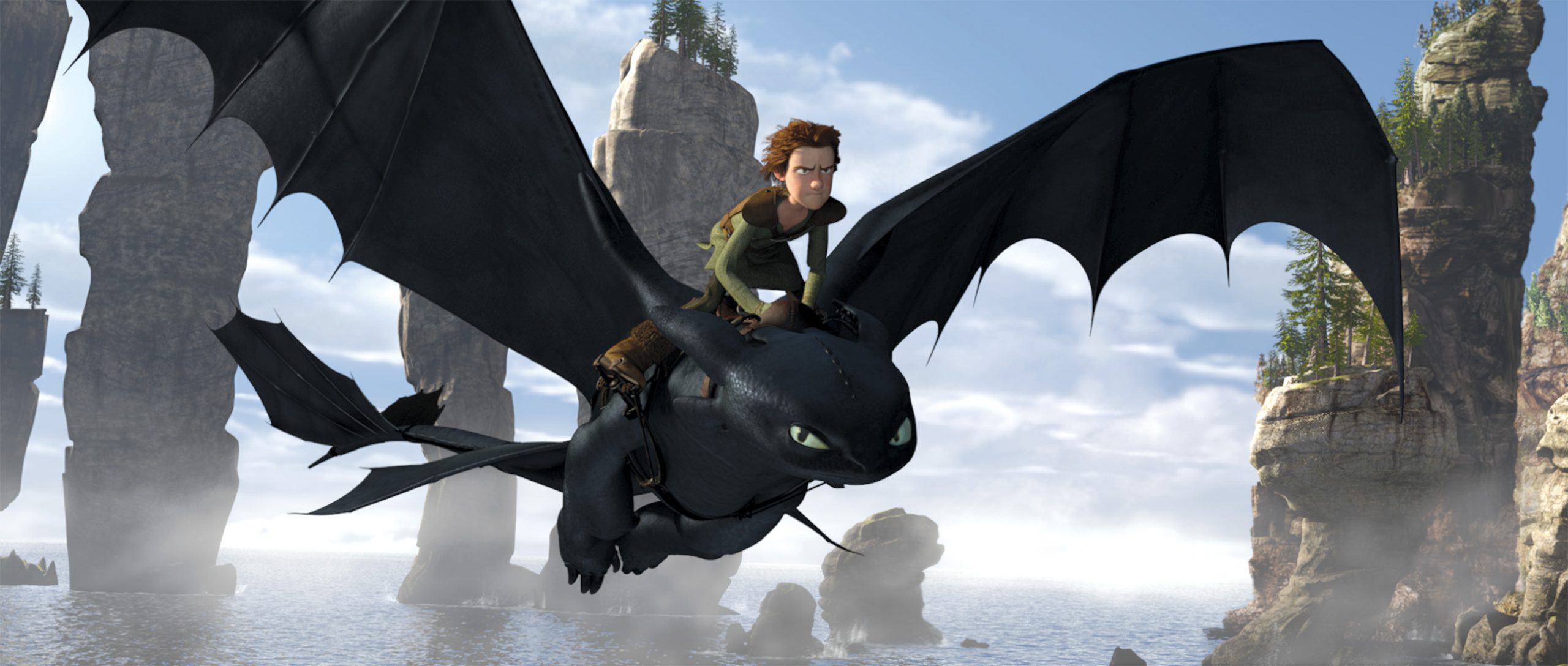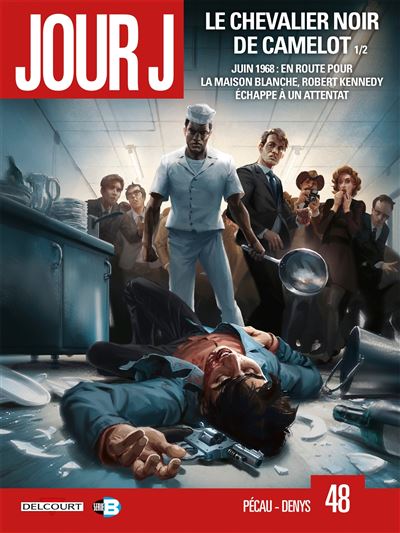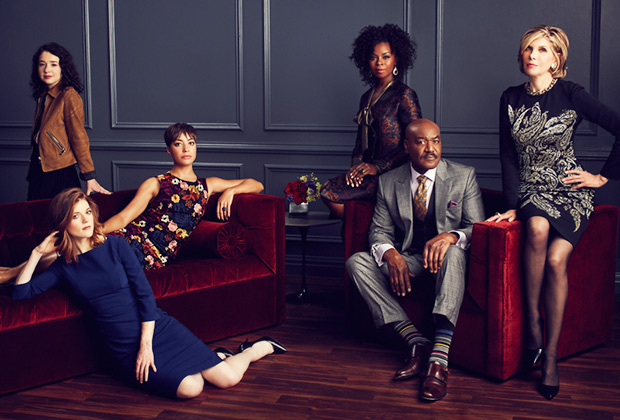The western has long been – and increasingly – a popular genre of Franco-Belgian comics, but it is much rarer in American comics. 7 Deadly Sins is therefore an important release especially since it marks the arrival of a new publishing house in France, TKO, thanks to Panini comics. Charge your Smith & Wesson because many threats lurk …
Criminals to the rescue
From the first page, the action propels the reader to 1867 in Texas. The Black Cloud Comanche and his tribe (one of whom is a European) attack settlers and then kidnap a woman and a child. In a nearby village protected by a militia, Father Threadgill is shocked by this violence and tells his assistant Antonio. The priest goes to help these victims. Meanwhile, Padre Antonio comes to prison to confess to criminals. He begins by meeting Jericho, a black soldier from the North lost in the South. He was the hero of the slaves during the war but he swung into violence and has just hit a brothel keeper because she sold her binoculars to the death of his wife in childbirth. He is therefore placed in a cell with five other people we meet in the first chapter of presentation. They are all sentenced to death on their way to prison: Irish Claire is an androgynous bank robber, Malene Johnson, a former pregnant slave, killed her former owners, Dapper Dudley is the best trigger player in the west in shows, and Hogg Smith, a fat cannibal ate his wartime companions in a siege. With Antonio, they are the 7 Deadly Sins, because each illustrates a capital sin because the six prisoners are freed by the assistant priest who recruits them as mercenaries. Yet this is only the first of many twists and turns. These killers agree to flee together but, for all that, they are far from being allies or friends but must help each other in a quest for gold or the redemption of a sin while they are hunted by Rangers in a warring Indian territory. The reader then follows a chase through the desert amid constant threats. 
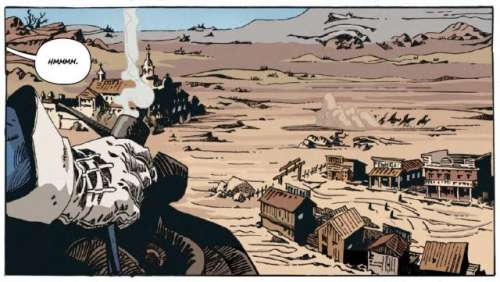
Pervasive violence
While following the adventure of the group, we gradually discover the past of each through flashbacks in particular the tragic life of Malene. Everyone in this troupe has had a dark and often very gory life. Scenes mark by their violence because this story reveals the hidden side of films or comics of the 50s. Revenge is in the law while the Indians are certainly violent but above all suffer genocide. We discover the context of the post-Civil War period. Former soldiers from the south or north have become thieves. The slaves are free without their daily lives changing because they have to continue to work for their former masters for poverty wages and even pay for board and lodging. In fact, they are so in debt that they spend their lives paying off their boss. Moreover, this world is the one according to the myths of the west. As one character says, there is no more room for heroes. This violence flows boxes because the drawing of the Russian Artyom Trakhanov is quite different from the superheroic realism that is usually found in comics. By the caricatured faces, we are strangely close to the Franco-Belgian humor comic in some boxes. Elsewhere, the faces are grimacing and riddled with scars. We also think of nineteenth-century cartoonists like Daumier.
A western between tradition and the twenty-first century
Tze Chun is initially a film screenwriter and this is reflected in reading. With this motley and unreliable group, one thinks of the Seven Mercenaries. We find the codes of the classic western and the spaghetti western but the screenwriter shakes them up by more modern issues. The priest is not a holy man but he has a safe overflowing with gold and pays the Texas Rangers to be quiet. Even if the major genre of current comics is that of superheroes, we learn in the very good introduction retracing the history of the genre in cinema and the various countries of comics that in the post-war period the western was more popular than superheroes. In addition, unlike many comics, the story does not show wide open spaces but Artyom Trakhanov creates a layout and boxes without scenery, suffocating pages in connection with the sticky and dark atmosphere of the story. 
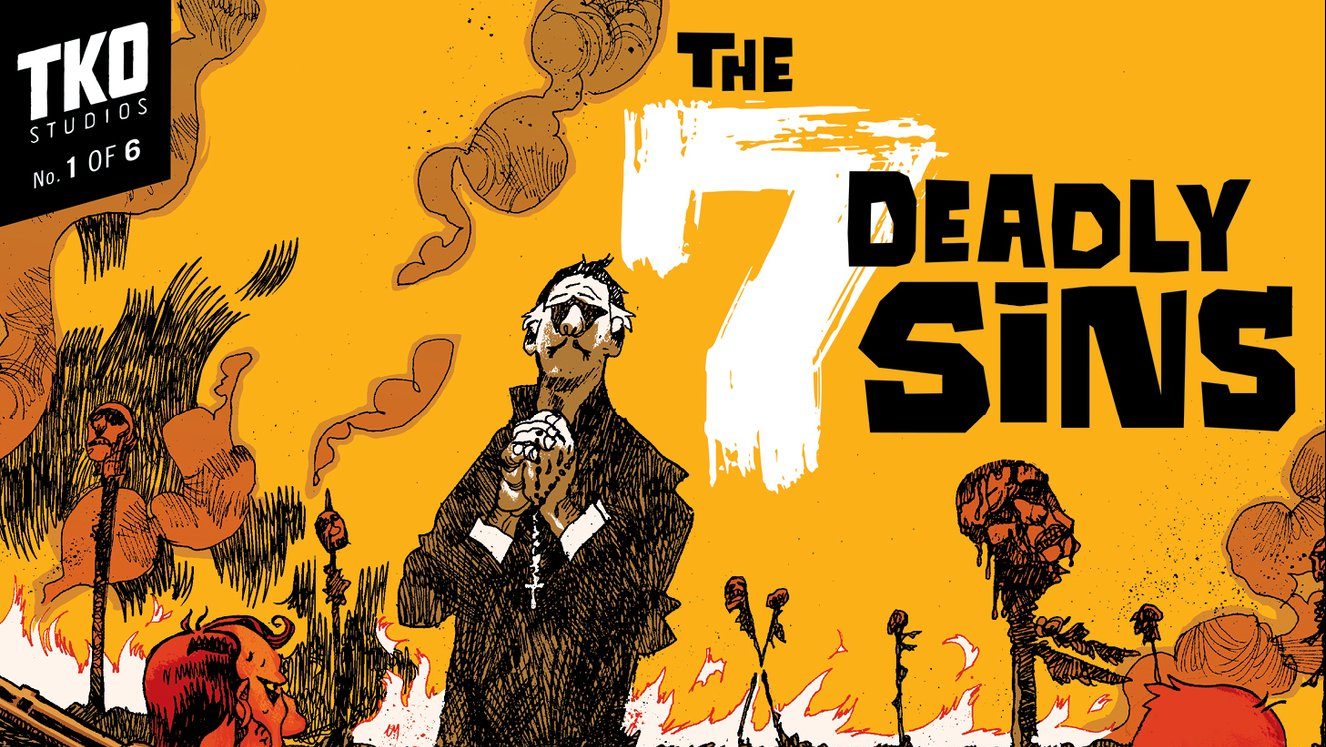
Starting from a farm attack, 7 Deadly Sins becomes the epic of marginals who prove to be much more supportive and human than the local society. Violence strikes the reader until the final bloody battle. More than the gore drawing, it is the complex fate of this group of anti-heroes that will leave a mark (blood red necessarily) in your mind.
You can read other western columns like Red Clay Chronicles or Marshall Bass.




